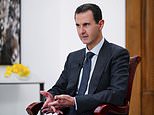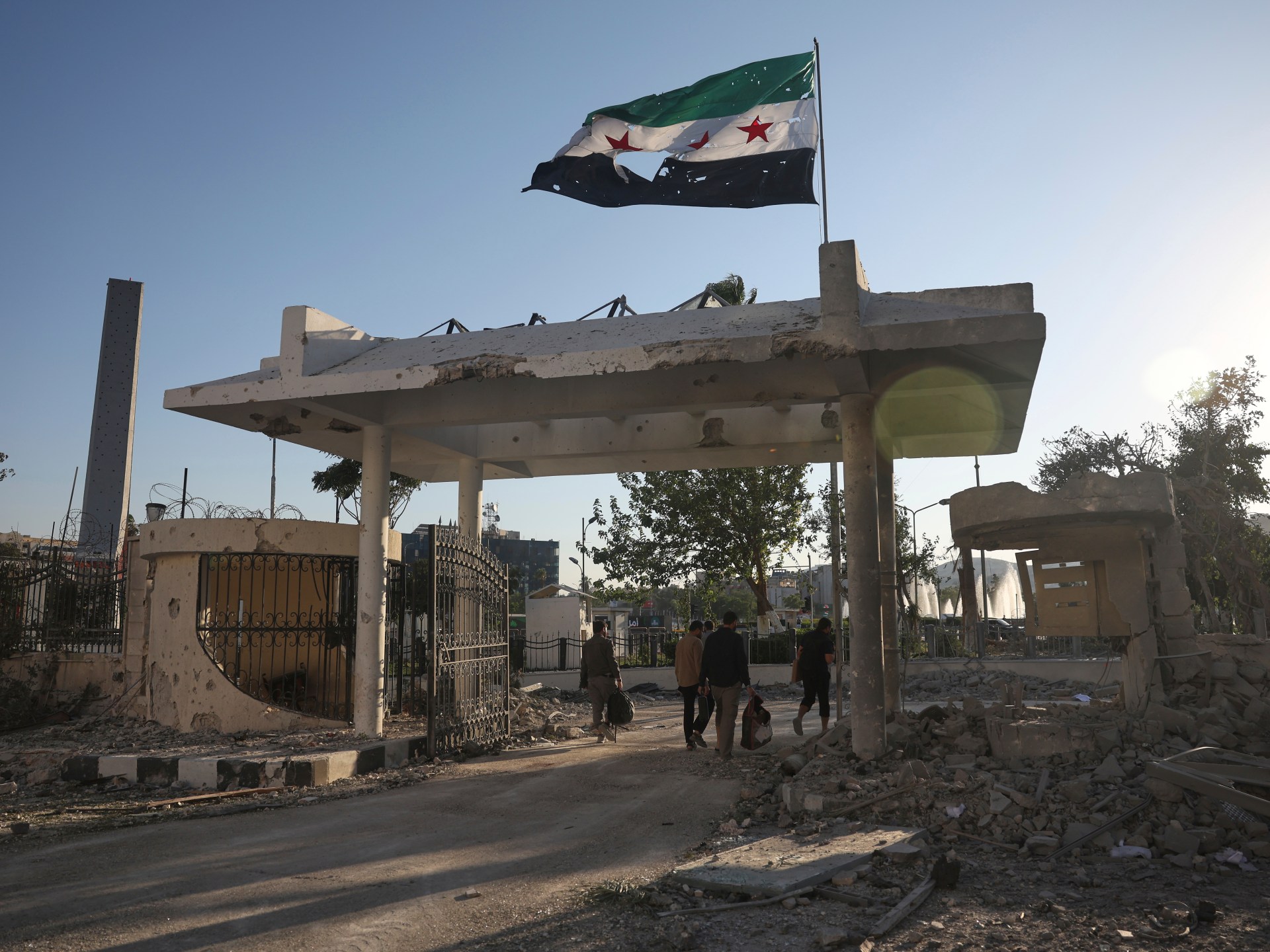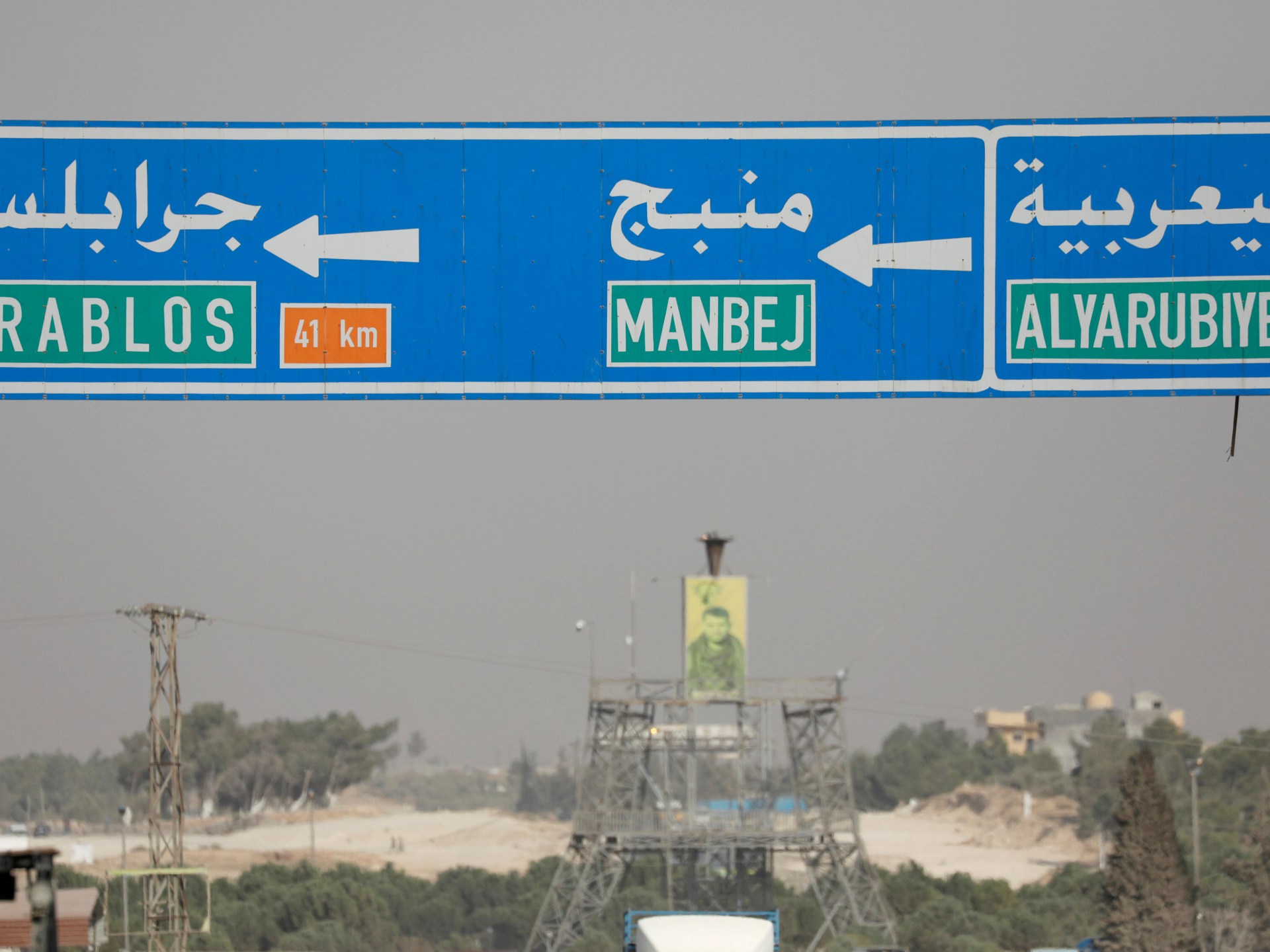
Former Syrian President Bashar al-Assad has issued his first statement since he was deposed by rebel groups and fled to Russia less than two weeks ago.
Assad, speaking from Moscow where he sought refuge, said that ‘at no time during the events that have taken place in Syria‘ did he intend to step down or flee, adding that he remained in Damascus until the last possible moment.
He claimed to have left the capital for Russia’s Hmeimim air base near Latakia in the early hours of December 8, shortly before Islamist rebels from Ha’yat Tahrir al-Sham (HTS) and other militias seized the city.
In a statement released via the Syrian Presidential Telegram channel, Assad said he was addressing ‘a flood of misinformation and narratives far removed from the truth’.
‘My departure from Syria was neither planned nor during the final hours of the battles, as some claim,’ Assad declared. ‘I remained in Damascus, carrying out my duties until the early hours of Sunday, December 8, 2024.
‘At no point did I consider stepping down or seeking refuge, nor was such a proposal made by any individual or party. The only course of action was to continue fighting against the terrorist onslaught.’
He went on to insist that he was forced to leave Syria when Hmeimim air base came under drone attack, prompting Moscow to order his evacuation.
Assad portrayed himself as a devoted leader and family man who remained ‘alongside his people’ throughout the civil war—even as his forces, allied with Russia, Hezbollah, and Iranian-backed militias, were responsible for thousands of deaths.
‘I have never sought positions for personal gain but have always considered myself a custodian of a national project, supported by the faith of the Syrian people,’ he said.
He concluded by expressing ‘hope that Syria will once again be free and independent.’
Former Syrian President Bashar al-Assad has issued his first statement since he was deposed by rebel groups and fled to Russia less than two weeks ago
People celebrate the collapse of 61 years of Baath Party rule in Umayyad Square after armed groups, opposing the Assad regime, take control in Damascus
Workers carry human remains from a newly uncovered mass grave in a field in Izra, in Syria’s southern Daraa province
Body bags lie in a field after a mass grave was discovered on agricultural land in Izra, Daraa province
Assad’s last-ditch evacuation from Syria saw him board his private jet and head for Russia’s Hmeimim air base on the country’s west coast using a ‘transponder trick’.
Flight-tracking website Flightradar24 showed how the presidential plane believed to be carrying Assad left Damascus airport in the early hours of December 8.
The plane headed towards the Mediterranean Sea before making a U-turn and disappearing from the map, presumably as pilots turned off the transponder that tracks flights and reports their position to air traffic control.
Assad’s jet is said to have landed at the Moscow-controlled airbase, where he was swiftly transferred to a Russian military jet and left his war-torn nation behind, heading for refuge in the Russian capital.
Now, as Assad stews in Moscow, Islamist rebel group HTS is setting about bringing Syria under control, establishing a transition government and working to roll out aid and services to civilians.
Last week, HTS used state television to announce Mohammad al-Bashir – the head of the group’s so-called ‘Salvation Government’ in Syria’s northwest Idlib province – as interim Prime Minister of a transitional cabinet that will remain in place until March 1.
But the seemingly stable beginnings of the transition government belie what is unfolding elsewhere across Syria.
There are makings of a new civil war in the north as Turkish-backed Syrian National Army (SNA) militants streamed into Kurdish-held areas.
Widespread reports claimed the SNA was ransacking Kurdish homes while shocking videos emerged that appeared to show Turkish-aligned rebels executing wounded Kurdish soldiers as they lay in hospital beds in the town of Manbij.
Meanwhile, Israel conducted widespread airstrikes and bombing campaigns designed to demolish the weapons stockpiles and military hardware left behind by regime forces, while advancing troops and tanks far into the buffer zone separating Syria from the Israeli-occupied Golan Heights.
Other reports claim ISIS fighters captured and executed Syrian government forces as they fled the HTS onslaught through the Homs desert last week.
Russian president Vladimir Putin attends a meeting with Syria’s Bashar al-Assad at the Kremlin in July
In this aerial view, ruined buildings dominate the landscape on Saturday in Jobar, Syria
An An-124 heavy transport aircraft with its nose cone lifted, at the Russian Hmeimim airbase, near Latakia, Syria, last Friday
Destroyed trucks after a Turkish airstrike near Qamishli, north-east of Syria, on December 11
Crowds in Damascus celebrate after Islamist-led rebels declared that they had taken the Syrian capital in a lightning offensive
Russia’s deputy foreign minister Sergei Ryabkov claimed over the weekend that Assad was transported out of Syria ‘in the most secure way possible’.
Speaking to NBC News, Mr Ryabkov said: ‘He [Assad] is secured, and it shows that Russia acts as required in such an extraordinary situation.’
When asked if Moscow would hand Assad over the International Criminal Court, he implied it would not, saying Russia ‘is not party to the convention’ that established it.
Human rights groups have previously accused Assad of war crimes, including the use of chemical weapons on civilians.
Explaining why Russia helped Assad escape, Ryabkov said he ‘was accused by the same group of countries and governments that continuously defeat attempts to live their own ways as it happened in Iraq, in Libya and in many more’ in a pointed reference to Western powers.
Russia’s military might was instrumental in propping up the Assad regime throughout the 2010s, as Syrian government forces struggled to repel rebel advances.
Vladimir Putin launched a military intervention in Syria from 2015, when Russia’s air force and ground troops aided Syrian government forces along with Hezbollah and a patchwork of Iranian-backed militias.
In the course of this intervention, Russia built up a considerable military infrastructure in Syria, the jewels of which are the Hmeimim air base near the city of Latakia and a naval facility in Tartus, which is Russia’s only Mediterranean naval hub.
Dmitry Peskov, Putin’s press secretary, told international press this weekend that Russia was in contact with HTS and rebel groups in Syria regarding its military bases there.
He said: ‘We, of course, maintain contacts with those who are currently controlling the situation in Syria,’ Peskov said in a conference call with reporters, but gave no further information.
Putin has thus far declined to meet Assad, according to Russian media.
Meanwhile, as HTS attempts to stabilise Syria, the group’s military chief revealed the plan to topple Assad was years in the making.
Abu Hassan al-Hamwi, the head of HTS’ military wing, claimed the group had prepared for a renewed war against Assad’s forces by uniting opposition groups, in the northern province of Idlib and consolidating military equipment including a drone arsenal.
People light up flares near the landmark Damascus Sword sculpture amid celebrations following the fall of Bashar Al-Assad
Crowds wave Syrian revolution flags in Umayyad Square following the end of the 61-year-old Baath regime
The leader of HTS, Abu Mohammed al-Golani, has sought to present the group as moderate and inclusive
When a tenuous ceasefire was agreed in 2020, HTS maintained a small stronghold in Idlib.
From there, the group meticulously planned their attack, waiting for the best moment to strike.
Al-Hamwi, who has led the group’s military division for five years, told the Guardian the rebels developed their forces having ‘studied the enemy thoroughly’ and analysing opposition tactics.
HTS expanded its power base by striking deals with rival opposition groups and inviting them to join their umbrella movement.
The rebels also began pouring resources into creating a drone unit to rival Assad’s air force, including reconnaissance drones, attack drones and suicide drones.
As their strength grew, HTS organised an ‘operations room’ to unite commanders from 25 rebel groups in the south and enable them to coordinate action across the nation.
Spurred by a desire to halt neighbouring powers, including Saudi Arabia and the UAE, from normalising relations with the Assad regime – and with the president’s staunchest ally Russia occupied by events in Ukraine – HTS decided to strike in November.
The offensive began in earnest on November 27.
Just two days later, the rebels shocked the world by taking Aleppo – the nation’s second largest city that took Assad four years to seize.
‘We had a conviction, supported by historical precedent, that ‘Damascus cannot fall until Aleppo falls’, said Al Hamwi.
Just four days later, opposition forces in the north took the city of Hama before marching on Homs.
By December 8, the rebel groups had encircled Damascus.







